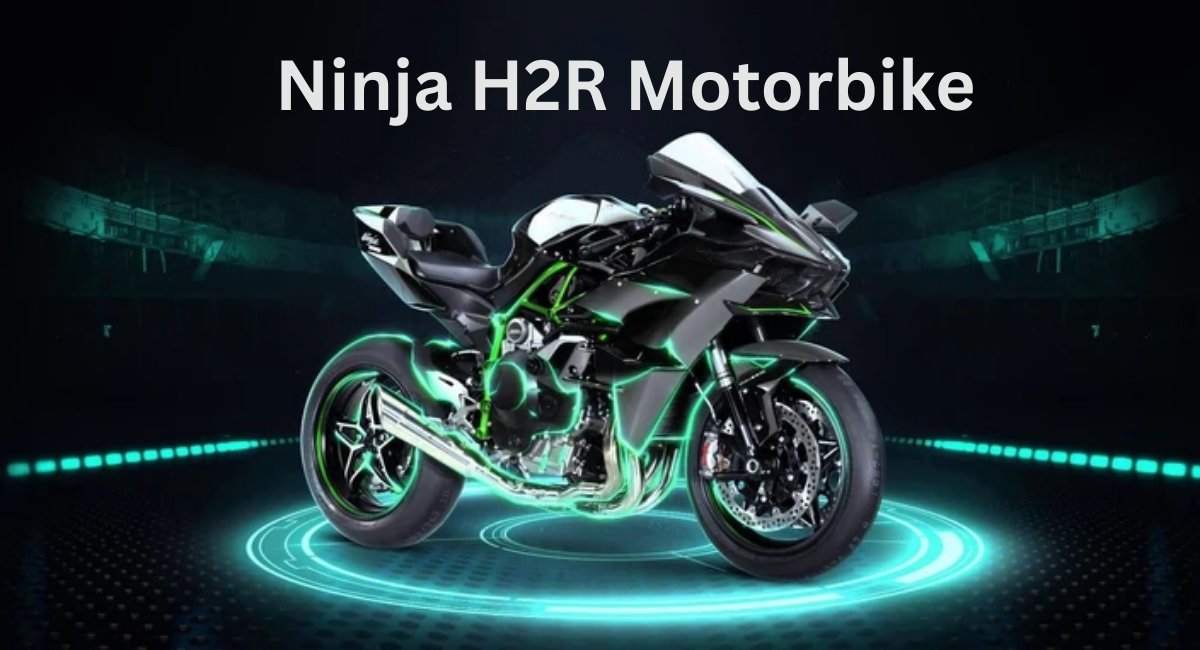When it comes to pushing the limits of motorcycle engineering, no production bike comes closer to a MotoGP machine than the Kawasaki Ninja H2R. Dubbed the “World’s First Supercharged Production Motorcycle,” the Ninja H2R is not just a motorcycle—it’s a mechanical masterpiece, a sonic missile, and a track-only demon built for speed, power, and adrenaline.
As of 2025, the Ninja H2R remains one of the most exclusive, powerful, and awe-inspiring motorcycles ever built. While Kawasaki has not released a new model year update, the H2R continues to dominate headlines, set lap records, and captivate riders and engineers alike with its 231 horsepower, 300+ km/h (186+ mph) top speed, and jet-like acceleration.
In this definitive guide, we’ll dive deep into everything you need to know about the Kawasaki Ninja H2R—from its groundbreaking technology and performance specs to real-world track experience, ownership costs, and how it compares to rivals like the Ducati Panigale V4 R and BMW M 1000 RR.
What Is the Ninja H2R?
The Kawasaki Ninja H2R is a track-only, supercharged hyperbike introduced in 2015 and refined through continuous updates. Unlike the street-legal Ninja H2, the H2R is not DOT-approved and cannot be ridden on public roads. It exists purely for racing circuits, closed courses, and adrenaline-fueled performance.
🔥 Fun Fact:
The “R” in H2R stands for “Racer”—a nod to its purpose-built, no-compromise design.
Ninja H2R: Key Specifications (2025 Overview)
⚠️ Note: Power figures are measured at the crank. Real-world wheel horsepower is ~231 hp due to drivetrain loss—still more than most superbikes.
The Heart of the Beast: Supercharged Inline-Four Engine
The 998cc supercharged inline-four engine is what sets the H2R apart from every other production motorcycle.
Why Supercharging?
- Unlike turbochargers, which use exhaust gases, superchargers are mechanically driven by the engine.
- Provides instant throttle response with minimal lag.
- Enables linear power delivery even at high RPMs.
Engineering Highlights:
- Centrifugal Supercharger: Spins up to 200,000 rpm
- Intercooler System: Cools compressed air for maximum efficiency
- Ram-Air Intake: Forces air into the intake at high speed
- Race-Developed Combustion Chamber: Optimized for high-RPM performance
💬 Kawasaki Engineer Insight:
“The H2R engine produces as much power per liter as a Formula 1 engine from the 1990s.”
Aerodynamics & Design: Built for Speed
The H2R isn’t just powerful—it’s aerodynamically optimized to slice through the air and stay planted at extreme speeds.
Key Aerodynamic Features:
- Front Splitter & Dive Planes: Increase front-end downforce
- Rear Winglets: Improve rear stability (not for show)
- Carbon Fiber Bodywork: Lightweight and rigid
- Integrated Exhaust System: Minimizes turbulence
🏁 Real-World Test: At the Tsukuba Circuit (Japan), the H2R achieved 1.8g of cornering force—comparable to a GT3 race car.
Electronics & Rider Aids
Despite its raw power, the H2R is packed with advanced electronics to help riders manage performance safely.
Key Systems:
- KTRC (Kawasaki Traction Control): 5 modes + off
- Launch Control: Optimizes acceleration from a standstill
- Wheelie Control: Prevents excessive front-lift
- Engine Brake Control: Manages deceleration under downshifting
- Pit Mode: Reduces speed to 50 km/h (31 mph) for pit lanes
- KIBS (Kawasaki Intelligent anti-lock Brake System): Race-tuned ABS
✅ Pro Tip: Even experienced riders are advised to start in Mode 1 (Low Power) and work up to full power mode.
Track Performance: What It Feels Like to Ride
Riding the Ninja H2R is often described as “hanging onto a jet engine.”
On the Track:
- Acceleration: From 0–200 km/h (124 mph) in under 7 seconds
- Top Speed: Unrestricted, it exceeds 310 km/h (193 mph)
- Handling: Razor-sharp steering with Öhlins suspension tuned for track precision
- Braking: Brembo calipers bring it from 200 km/h to 0 in ~100 meters
💬 Professional Rider Quote:
“On the straights, it feels like you’re being sucked forward. In the corners, it stays flat and stable—even at 180 mph.” – Moto journalist, MCN
Ninja H2R vs. Ninja H2: What’s the Difference?
✅ Bottom Line: The H2R is lighter, more powerful, and more track-focused—but only for closed circuits.
Ownership: Cost, Availability & Maintenance
Owning an H2R is a privilege—and a responsibility.
Price (2025)
- MSRP: $55,000 USD (varies by region)
- Canada: ~$75,000 CAD (due to import and dealer fees)
- UK: £50,000
- Australia: AUD $90,000+
💡 Note: Due to low production volume, used H2Rs often sell above MSRP.
Availability
- Not mass-produced—built in limited numbers
- Sold through Kawasaki’s invitation-only program in some markets
- Requires proof of track experience or racing license in certain regions
Maintenance Costs
- Supercharger Service: Every 12,000 miles (~$2,500)
- Carbon Fiber Repairs: Extremely expensive—$1,000+ for small damage
- Tires: Slick or race tires required—$600+ per set
- Oil Changes: Every 3,000 miles with high-performance synthetic
⚠️ Warning: Insurance is not available for public roads—only for track events or private property.
How It Compares: H2R vs. The Competition
✅ Verdict: The H2R wins on raw power and innovation, while rivals win on agility and street usability.
Is the Ninja H2R Right for You?
The Ninja H2R is not a beginner’s bike—it’s not even a daily rider. It’s for:
- Professional racers
- Track day enthusiasts
- Collectors and Kawasaki loyalists
- Engineers and tech lovers
If you want a street-legal version with similar tech, consider the Ninja H2 SX or H2 Carbon.
Final Thoughts: A Legend of Modern Motorcycling
The Kawasaki Ninja H2R is more than a motorcycle—it’s a statement. A statement that internal combustion isn’t dead, that supercharging has a place in two wheels, and that human ingenuity can still shock the world.
Even in 2025, with electric bikes rising, the H2R remains the pinnacle of ICE (internal combustion engine) performance. It’s loud, fast, dangerous, and utterly mesmerizing.
For those lucky enough to ride it, the H2R isn’t just a machine—it’s an experience they’ll never forget.
Want to Ride One?
👉 How to Get Access:
- Contact an authorized Kawasaki dealer with a racing division
- Prove track experience (licenses, event history)
- Attend a Kawasaki track day or demo event
- Purchase through official channels (no online retail)
📍 Locations: H2R demo days are held at circuits like Laguna Seca (USA), Suzuka (Japan), and Brands Hatch (UK).


